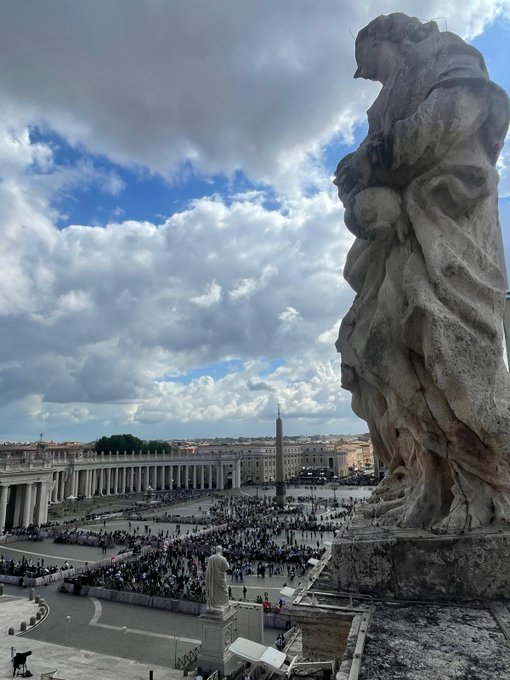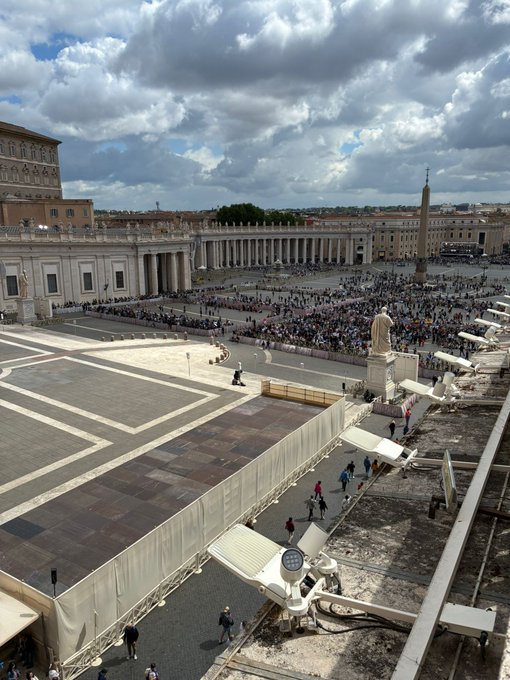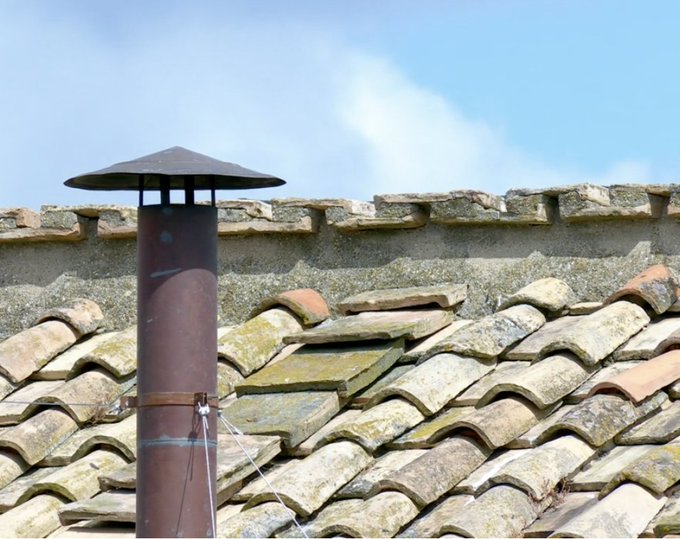VATICAN, Italy – The 133 cardinal electors have not yet selected a new Pope, as seen by the black smoke rising from the chimney above the Sistine Chapel this morning.
Already, crowds have gathered yet again in St. Peter’s Square, waiting to see the result of the first morning of voting at the conclave.
At 9:00 p.m. on Wednesday, black smoke billowed from the chimney above the Sistine Chapel, indicating that the conclave had held its first ballot and that no Pope had been elected.
It was anticipated that the news would be made after 7 p.m., and about 45,000 people had gathered in St. Peter’s Square to await it. They ultimately had to wait till nine o’clock.
Deacon Nicholas Nkoronko of Tanzania was one of the people in the square. He stated in an interview with Vatican News, “Our role here is to pray and to join with other Christians, other Catholics, to pray for the Holy Spirit to guide the whole process.”
“Wherever the new Pope comes from,” Deacon Nkoronko stressed, “whether it’s Africa, Asia, or America, what we need is we need a holy Pope. We need a pope who will guide the Church and be the pastor of the Church.”
How the whole voting process kicked off
On Wednesday, this announcement ran out: ‘Extra omnes,’ ‘everyone out.’
Then, the doors of the Sistine Chapel close with this proclamation, and all non-essential personnel exit.
After leaving, Cardinal Raniero Cantalamessa delivered a meditation, inviting the cardinals into a space of prayer and discernment before voting for the next pope began.
“Eligo in Summum Pontificem” (“I elect as Supreme Pontiff”).
Y News has established that these are the words printed on each ballot that the 133 cardinal electors are using to choose the 267th Roman Pontiff.
The ballot is rectangular, with the top half bearing the Latin phrase and the bottom half left blank for the cardinal to write the name of their chosen candidate.
The ballot is designed to be folded in half – a detail prescribed by the Apostolic Constitution Universi Dominici Gregis.
The ceremonial officials present at least two or three ballots to each cardinal elector. Three scrutineers (to count the votes), three infirmarii (to gather votes from sick cardinals), and three revisers (to confirm the count) are then chosen by lot by the senior cardinal deacon.
New names are drawn in their place if any of the chosen individuals are unable to fulfill their tasks because of illness or other circumstances. We call this phase the pre-scrutiny.
How the cardinal electors cast their vote
Each cardinal, in order of precedence, writes the name of their chosen candidate on the ballot, folds it, holds it aloft so it is visible, and carries it to the altar. There, a chalice is placed with a plate covering it.
Each elector says aloud, in Italian:
“Chiamo a testimone Cristo Signore, il quale mi giudicherà, che il mio voto è dato a colui che, secondo Dio, ritengo debba essere eletto.”
(“I call as my witness Christ the Lord, who will be my judge, that my vote is given to the one whom I believe should be elected according to God.”
Congolese Catholics in Rome have spoken of their hopes that the next pope will be from their country. Cardinal Ambongo from DRC is one of the key candidates for the papacy and one of 17 Africans taking part in the conclave to elect the successor to Pope Francis at the Vatican.
The cardinal then places the ballot on the plate and uses it to drop the vote into the chalice, bows to the altar, and returns to his seat.
What happens to cardinal electors with illness
Cardinals who are present but unable to walk to the altar due to illness give their folded ballot to one of the scrutineers, who brings it to the altar and deposits it in the same manner, without reciting the oath again.
Crowds gathering again in St Peter’s Square, waiting to see the result of the first morning of voting at the conclave.
To elect a new pope, a two-thirds majority is required. For the upcoming conclave on Wednesday, 7 May, that means at least 89 votes are needed out of 133 electors.
Regardless of whether a pope is elected, the revisers carefully verify the count and check the notes made by the scrutineers to ensure everything was carried out correctly.
After this, before the electors leave the Sistine Chapel, all the ballots are burnt in a cast-iron stove first used in the 1939 conclave. The scrutineers handle this with help from the college secretary and the ceremonial officers, who are summoned by the senior deacon.
A second stove, installed in 2005, is connected to a chimney visible from St. Peter’s Square. This is where the chemicals are added to colour the smoke: black if no pope has been elected, white if one has.
If two votes are held in succession, the ballots from both are burnt together at the end of the second round.






